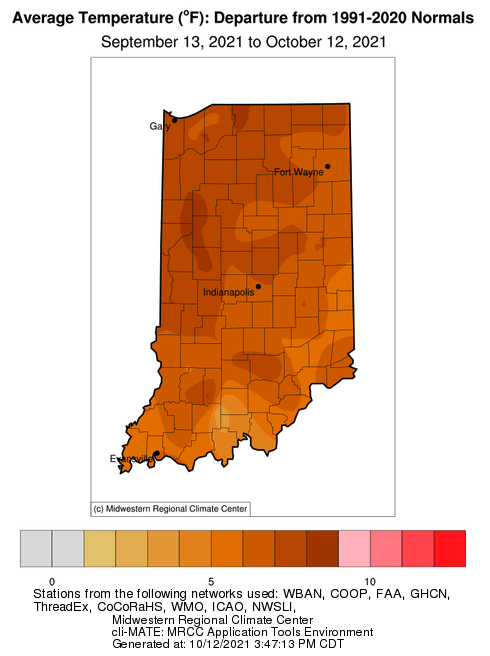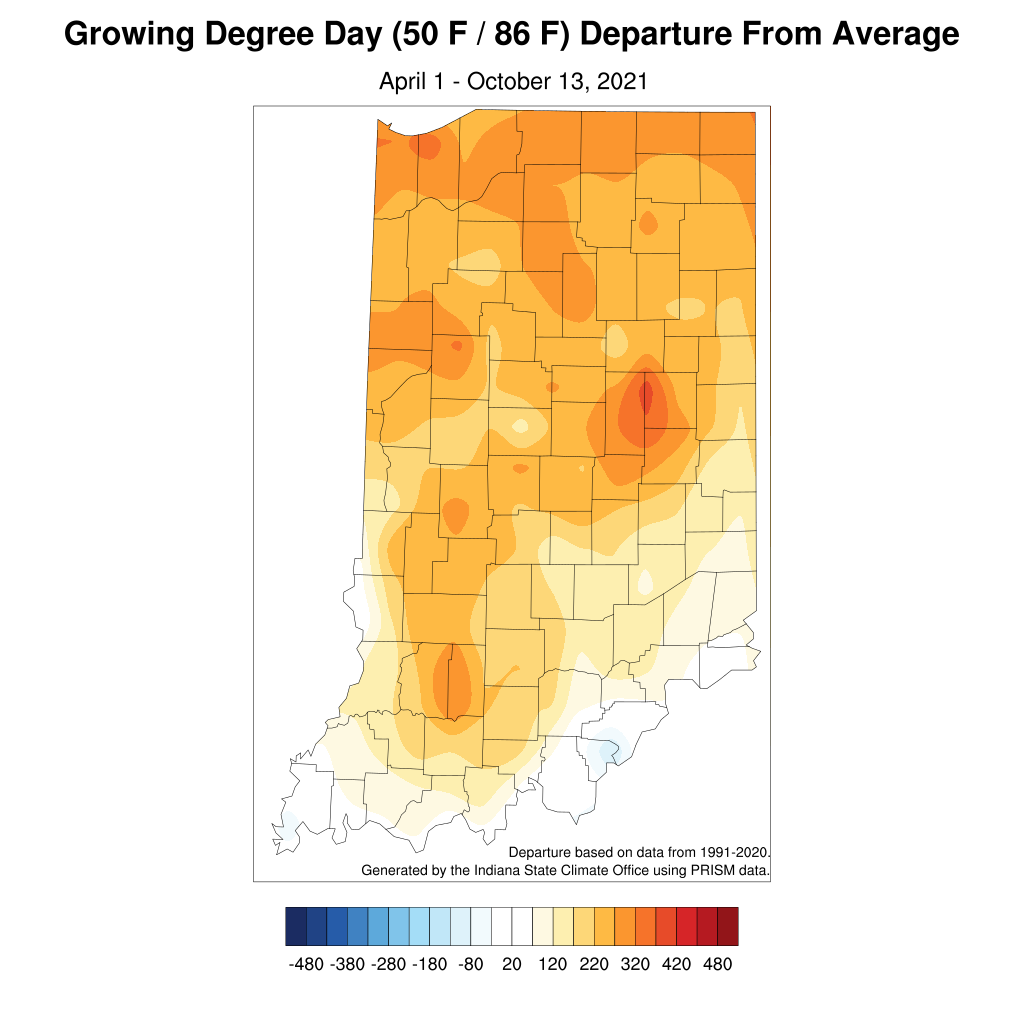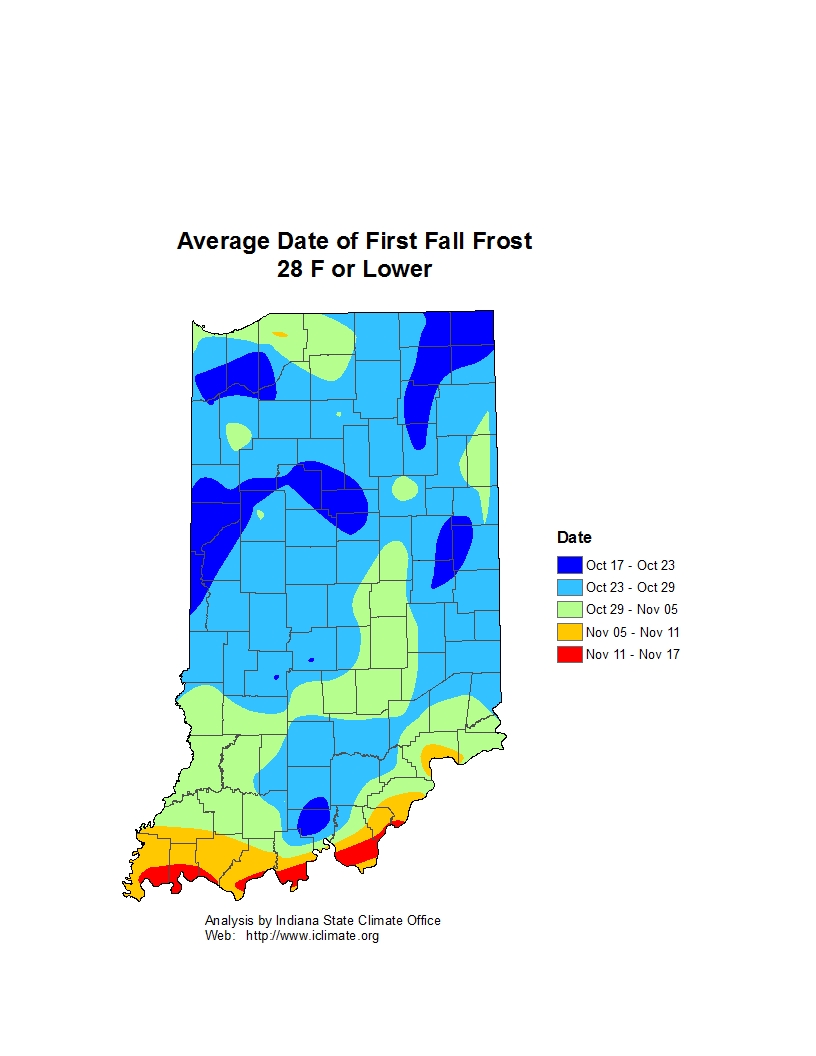The last several weeks have certainly been warmer than normal. Figure 1 illustrates just how warm with some parts of Indiana almost 9°F above normal over the past 30 days. That is quite incredible, however not many records were broken over this period. Climate outlooks for the next several weeks are indicating that above-normal temperatures are likely to continue. How will this impact the timing of the first hard freeze? Figure 2 shows the median date of the first hard freeze based upon data from 1981 through 2010. For Indiana, the end of October is when the first hard freeze typically has occurred. However, the last 10 years have been indicating an increasing warming trend. Combine that with the climate outlooks favoring continued warmer-than-normal temperatures, this year’s first hard freeze may be later than normal.

Figure 1. Difference in the maximum temperature and the 1991-2020 normals for September 13, 2021 through October 12, 2021.
Precipitation has been a bit more normal lately with periodic rain events passing through providing enough moisture to minimize any concerns for drought. In fact, the US Drought Monitor released on 14 October 2021 shows Indiana completely free of any drought or even abnormally dry conditions! Will this continue and are we possibly facing more issues around flooding? Some parts of Indiana have received an abundance of precipitation over the last 30 days which has likely caused localized flooding and some challenging harvesting conditions (Figure 3). However, the shorter-term outlooks for the rest of October are favoring below-normal precipitation with too much uncertainty on how precipitation amounts will be relative to normal over the next several months.
The latest El Nino – Southern Oscillation (ENSO) report from the national Climate Diagnostics Center is now indicating an 87% likelihood that a La Niña will develop by December. While correlations between La Niña events and winter climate in the Midwest are low, there are some indications that the early part of the winter (December into early January) tends to start off mild with warmer temperatures and near-normal precipitation but falling as rain rather than snow. The latter half of winter in Indiana tends to be a bit harsher with colder-than-normal temperatures and precipitation more likely to fall as snow. With climate trends favoring warmer seasons, will this pattern hold for this upcoming winter? We will just have to wait and see.
The growing season is wrapping up with harvests either underway or finished. With the warmer temperatures in September, the latest modified growing degree-day maps (Figure 4) are indicating above normal values compared to average (Figure 5) and recent years (Figure 6).

Figure 5. Modified growing degree day departures from the 1991-2020 averages from April 1 to October 13, 2021.






